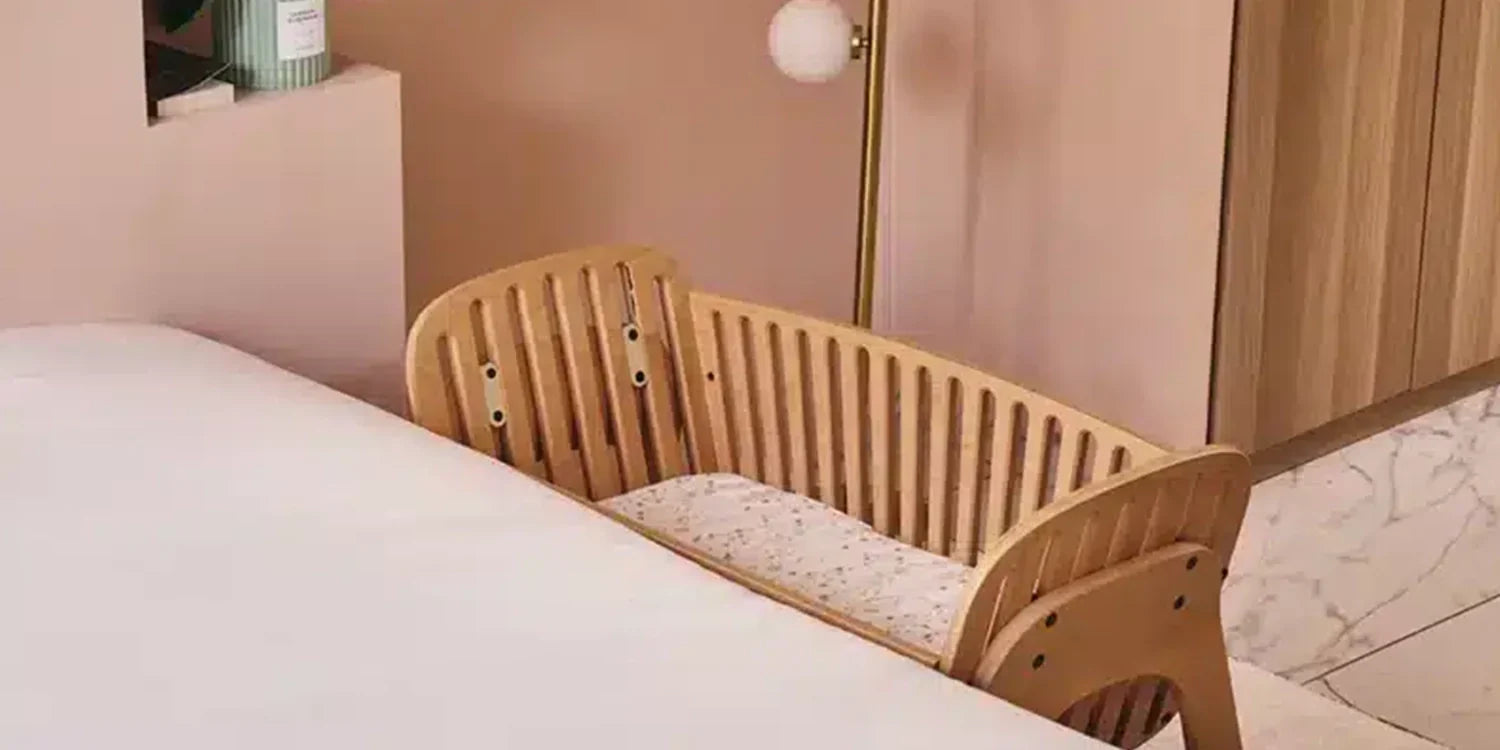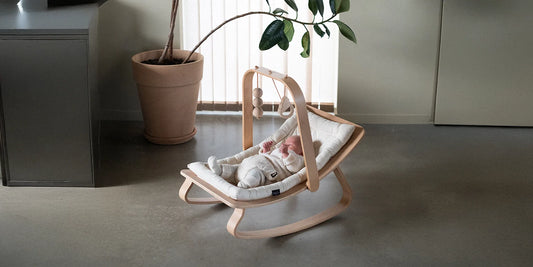Cododo: they slept happy and had sweet dreams together

To sleep or not to sleep with your baby, that is the question. We answer this big question by listing the advantages of co-sleeping. Benefits, WHO recommendations, safety rules...
You will have all the arguments in hand to decide if this co-sleeping method is right for you!

Co-sleeping: what is it?
Co-sleeping comes from the English term co-sleeping which means “sleeping with”. Often, in our contemporary European civilizations, the baby has its own room from birth, where it is supposed to sleep alone. In co-sleeping, the infant sleeps at night in his parents' room during the first weeks and even the first months of his life.
In fact, there are two practices in co-sleeping:
- Parents and babies share the same space, each in their own bed. The baby is in his crib or in a bassinet, on his mattress, near his parents' bed.
- Parents and baby sleep side by side, with a special co-sleeping baby bed, attached to that of dad and mom. In this case, it is advisable to respect certain rules that we will share with you below.
Co-sleeping in the world
So, is co-sleeping a common practice or, on the contrary, an unusual act? Well, that depends on the regions in the world! In Asia, Africa, and northern countries (in Sweden and Norway for example), co-sleeping is very common. Most families are used to sleeping together.
In Europe, sleeping with your baby is a little less normal. Often, this practice suffers from stereotypes that last a long time... Many people fear that this form of proximal mothering is the cause of a child's long-term dependence on his parents. So, myth or reality? In fact, studies tend to prove the opposite! By meeting the physiological needs of the child, parents are sending a clear message to the child: “You can count on us.” This bond of attachment reinforces a toddler's sense of security and trust. Thus, the little ones develop their autonomy more easily. However, even among professionals and specialists, opinions continue to differ. So what to do? Let's listen to the WHO and list the benefits of co-sleeping.


WHO recommendations
What does the WHO, the World Health Organization say? The WHO recommends keeping your child in the master bedroom for the first six months of life to reduce the risk of sudden infant death. Indeed, who says close baby, says mother and father more alert. Obviously, parents who prefer to sleep without their babies should not be blamed. It's a personal choice, just like breastfeeding. Our article is there to help you make an informed choice, according to your desires and needs.
The advantages of co-sleeping
Concretely, what are the benefits of sharing the master bedroom?
-
A peaceful sleep
Some parents are reassured to be so close to their babies. They hear him, keep an eye on him... and are alerted to the slightest suspicious noise. It is also the main reason. -
Breastfeeding or bottle-feeding made easy
Who says baby within reach also says less going back and forth to feed the baby who wakes up several times a night. So alarm clocks are lighter for everyone. No need to go to the other end of the house to pick up your baby, feed him, then put him back to bed. Breastfeeding moms sleep better... and better lactation. Baby-fed children and their parents also benefit from this proximity. -
A secure baby
Finally, in co-sleeping, the baby feels safe. Often, he wedges his breath onto that of his parents. In short, a real cocoon for a good night's sleep. Obviously, some parents see its advantages as disadvantages... Sharing a room can be experienced as the sacrifice of parental privacy. But we are not going to lie to each other, between the postpartum period and the nights of a newborn baby, which are often synonymous with a severe lack of sleep, we vote for everything that makes life easier. Co-sleeping can be one of them!
The WHO recommends keeping your child in the master bedroom for the first six months of life to reduce the risk of sudden infant death.
Co-sleeping safety rules
But be careful! To “co-dodate” well, it is nevertheless important to follow a few safety rules:
-
Baby must have their own bed
You do not sleep with your baby directly in your bed, at the risk of crushing or suffocating the baby. This is why it is recommended to opt for a cododo. -
Bye bye alcohol
Bedtime, alcohol and medication don't mix! If you're taking sleeping pills or partying (too much), don't sleep with your baby. -
Bye bye cushion
Prevent the risk of suffocation and banish pillows, blankets, blankets, stuffed animals and other textiles that could suffocate the baby from the bed and from yours. -
At the right temperature
Finally, cover baby lightly and don't overheat the room. The ideal temperature is 18° in the bedroom.

Our co-sleeping cradle, the KODO

If you are tempted by this co-sleeping experience, discover our new KODO cododo! We designed it to make your night with a newborn easier, while maintaining the aesthetics of your bedroom. Because a cododo does not have to be plastic to be practical! And then a beautiful piece of furniture will also leave beautiful memories on your family photos... This beech wood cradle with rounded shapes sticks to the parents' bed. It is height-adjustable to fit perfectly into adult beds (up to 200cm). The icing on the cake: like all Charlie Crane furniture, the KODO cradle was designed to last over time. It is therefore scalable and will be transformed into a pretty little bench, once baby has grown.
So don't hesitate any longer and opt for the #kodopourtous!








